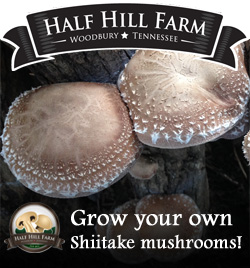Farm hour: becoming a USDA Certified Organic farm

soil samples from four sections of the farm
It’s Winter. There isn’t enough light in the day when we get home from work to do much on the farm, so we’re taking a 15 hour online course from the Rodale Institute to apply to become a USDA Certified Organic Farm. Every night’s a school night until the days get longer.
We’re learning a lot. Even if you don’t plan to become certified the program is a wealth of information to suppliment and reinforce your interest in sustainable farm practices. One of the most important things I’m learning about is building soil fertility and conservation. It’s also required by the federal government for certified producers to have plans in place to achieve that, such as amending the soil with composts and both animal and green manures as well as using cover and rotational crops.
Hour by hour – we’re hoping to have a decent Organic System Plan hammered out this month for our farm’s application. One of the first steps was to get a baseline measurement of our soil, so I took samples from four sections of field (each section with a few sample points) and sent it off for testing through the local Farmer’s CO-OP. I can’t say for sure, but the soil looks amazing. We’ll see what the test says.







